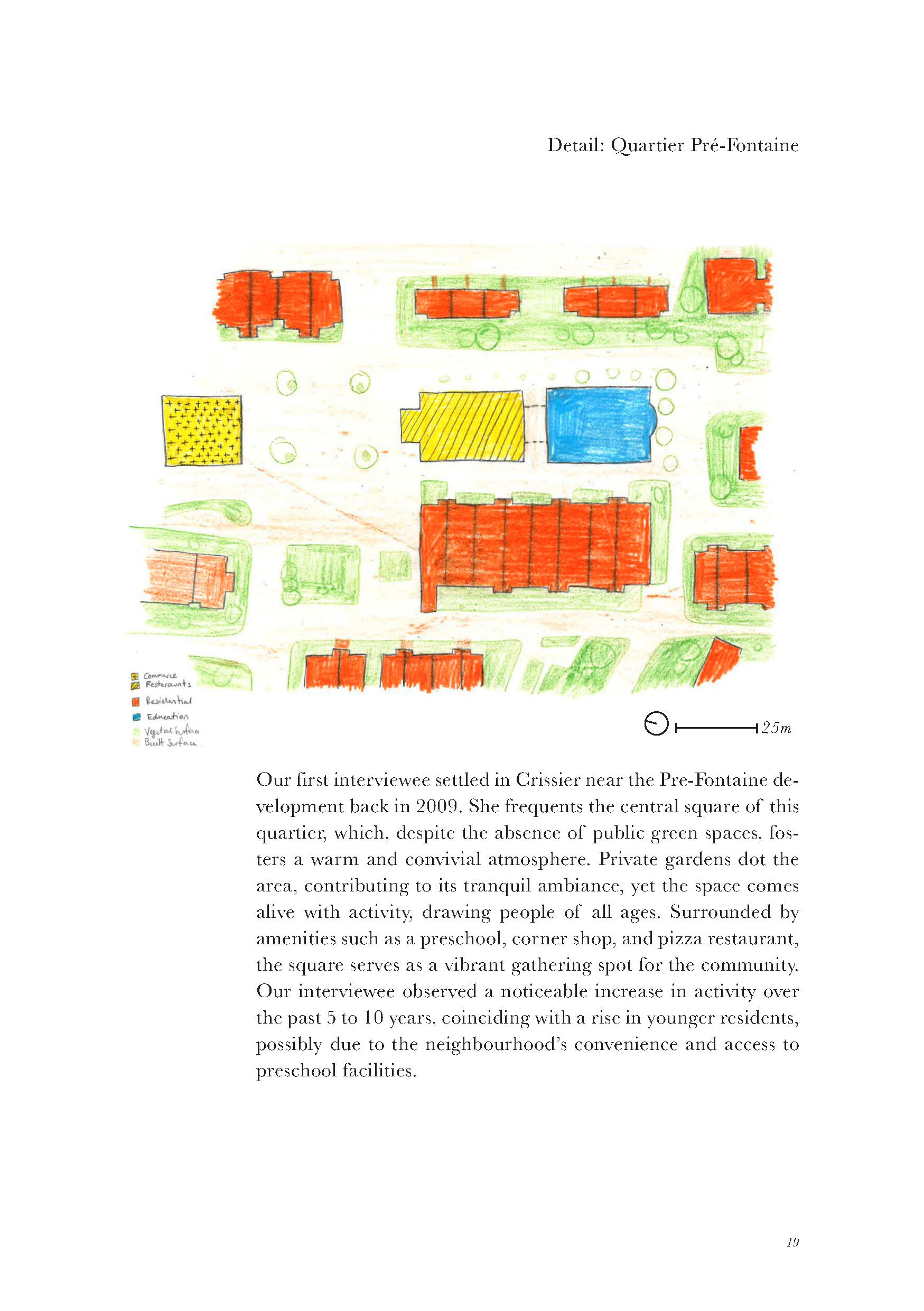A Territory in Transition
EPFL Urban and Territorial Analysis, Spring 2024
For 2 years while studying at EPFL, I lived in Crissier, a commune undergoing significant transformation on the outskirts of Lausanne. In this study, I set out to explore the tensions between its agricultural heritage and rapid industrialization, and how it has evolved. This study started off with a simple cycling route through key points in the territory, which was used as the starting point for my fieldwork. The fieldwork presented four key “zones” on the neighbourhood:
1. Industrial Areas: Warehouses and large constructions, often aluminum-clad and utilitarian.
2. Farmland: Pockets of agricultural land that echo the region’s roots.
3. Residential Zones: Ranging from detached villas to denser multi-family developments.
4. Mixed-Use Areas: Transition zones blending commercial, residential, and infrastructure.

Zones and Route of Inquiry

Line of Inquiry through Mixed Use Areas

Line of Inquiry through farmlands

Mixed Use Development Study

Mixed Use Development Study
Through interviews with residents and workers, two opposing narratives emerged. Some lamented the loss of Crissier’s rural beauty to noise, highways, and urbanization, while others embraced the opportunities offered by its growing infrastructure, proximity to Lausanne, and new spaces for families. Therefore, I traced Crissier’s historical development to understand what has persisted, what has transformed, and what has disappeared. Key findings include:
- Persistence of Mobility: Transportation pathways such as farmland gravel paths persisted and stand today in the form of larger roads.
- Transformation of Land Use: Farmland has largely given way to residential neighborhoods and industrial zones.
- Densification Patterns: Farmlands transform into detached villas that continue to be built in the North of Crissier. Influenced by growth of railways and the introduction of the highway, Crissier’s commercial and instructral centers are emerging around these vectors.

Transport Insfrastructure and Industrial Constructions

Construction over time

Changes in Land Surface

Transition from farmland to suburbs
Crissier’s story is one of adaptation, balancing progress with preservation. It reflects a complex interplay between historical identity and modern demands. The commune’s agricultural roots influence its collective memory, while its strategic location fosters industrial and residential growth. As Crissier continues to evolve, efforts to harmonize development with sustainability are crucial for a balanced future.